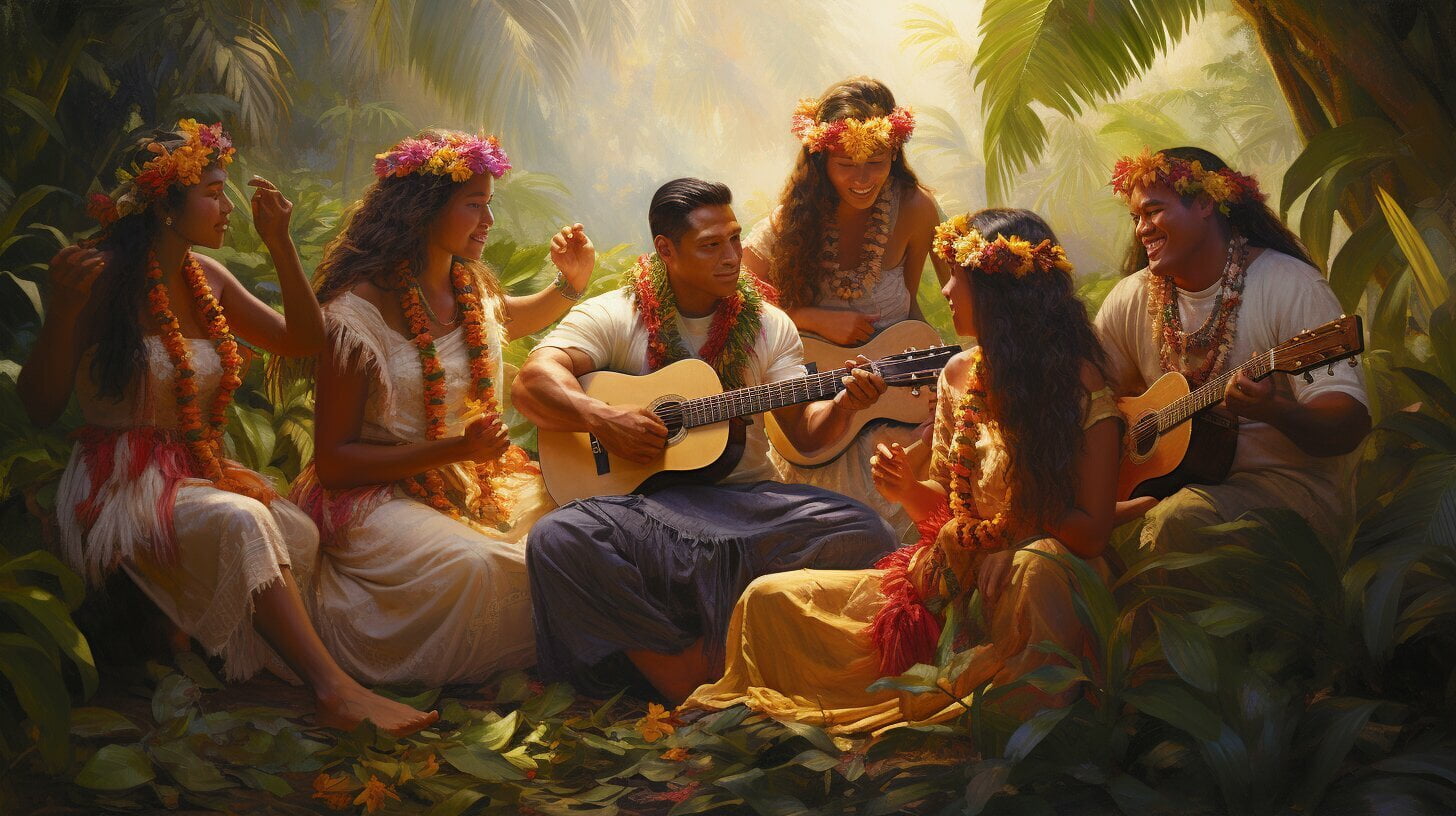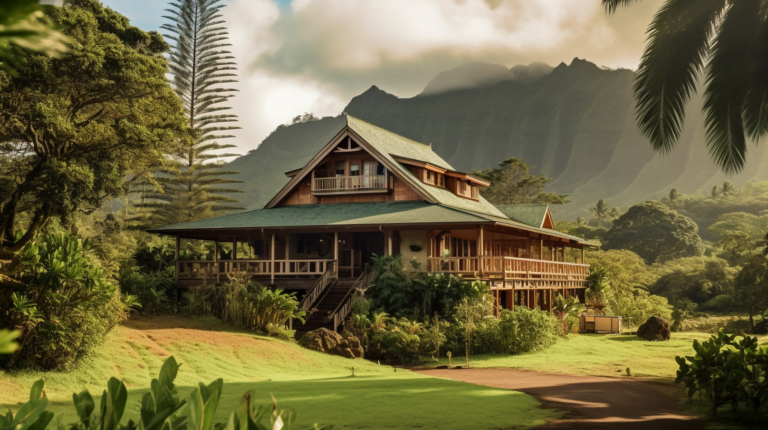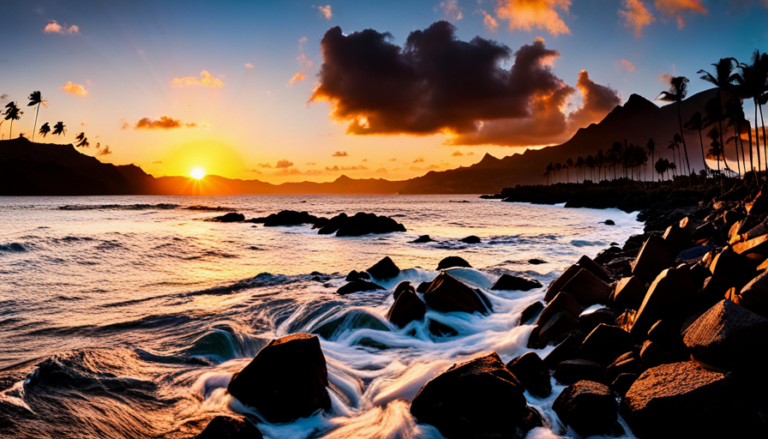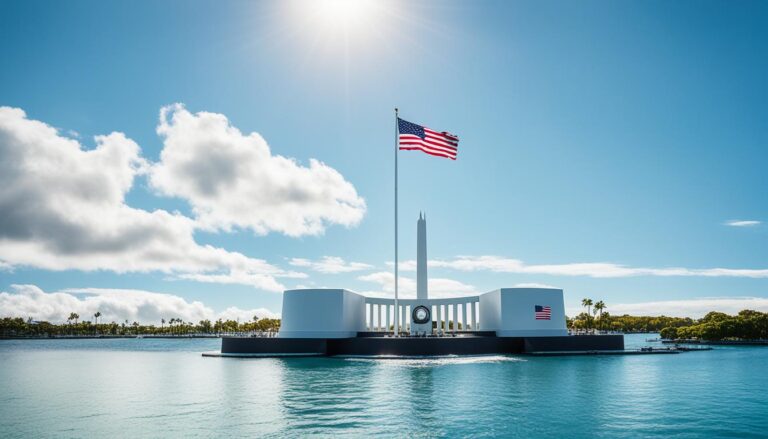🌺 Dive into the Enchanting World of Hawaiian Culture and Traditions 🌴
Hawaii is a place of vibrant culture and traditions that have been passed down through generations, making it a fascinating destination for those looking to immerse themselves in the rich Hawaiian culture. From the moment you step foot on the islands, you’ll be captivated by the unique customs, history, language, music, dance, and food that make up the fabric of Hawaiian society.
Key Takeaways:
- Experience the traditions and customs of Hawaiian culture, including the iconic hula dance and the delicious traditional Hawaiian food.
- Learn about the history and origins of Hawaiian culture, from the arrival of the first Hawaiians to their ancient beliefs and mythology.
- Explore the beauty and significance of the Hawaiian language, known as ‘Ōlelo Hawai’i, in preserving the cultural identity of the islands.
- Discover the enchanting melodies of Hawaiian music and the cultural significance it holds in Hawaiian society.
The History and Origins of Hawaiian Culture
The history of Hawaiian culture traces back to the arrival of the first Hawaiians, who settled on the islands around 400 – 500 AD and brought with them a rich tapestry of ancient beliefs and mythology. These skilled mariners, known as Polynesians, embarked on a remarkable journey across the Pacific Ocean, guided by stars, migratory birds, ocean currents, rainbows, and even whales. They traveled over 2,000 miles in double-hulled canoes called “Wa’a” and were accompanied by various animals and plants that would sustain them in their new homes.
It’s believed that the Hawaiian islands were uninhabited until the arrival of the Polynesians. The exact reasons for their migration are not fully understood, but it is thought that they explored and settled new lands to avoid overpopulation and conflicts with other tribal groups.
For several hundred years, the Polynesians were the sole inhabitants of the Hawaiian islands. However, around 1000 A.D., the Tahitians arrived and brought their own cultural influences to the islands. This blending of cultures further shaped the development of Hawaiian culture.
The Place of Refuge: Pu’uhonua o Honaunau
One of the significant historical sites that showcase the ancient Hawaiian culture is Pu’uhonua o Honaunau, also known as the “Place of Refuge.” This sacred place served as a sanctuary for those seeking safety and forgiveness. It was believed that those who reached the grounds of Pu’uhonua o Honaunau were absolved of their sins and could start anew.
| Historical Significance | Visitor Information |
|---|---|
| Pu’uhonua o Honaunau was a place of refuge for those who committed serious crimes, as well as defeated warriors seeking mercy. | Location: Honaunau, Hawaii Hours: Open daily from 7:00 AM to 5:30 PM Admission: $20 per vehicle |
| It also served as a cultural and religious center, where rituals and ceremonies were performed to connect with ancestral spirits and gods. |
The site is now a national historical park, allowing visitors to explore the ancient temple platforms, royal residences, and other significant structures. It offers a glimpse into the spiritual beliefs and practices of the early Hawaiians, reflecting their deep reverence for the land, sea, and divine forces.
As you wander through the grounds of Pu’uhonua o Honaunau, you can imagine the rituals and ceremonies that took place within these sacred walls and appreciate the cultural legacy left by the first Hawaiians.
“He ali’i ka ‘aina, he kauwa ke kanaka” – The land is chief and man is its servant. This Hawaiian proverb reflects the deep connection and respect the Hawaiians had for their land and environment.
Preserving Ancient Beliefs and Mythology
Ancient Hawaiian beliefs and mythology played a significant role in shaping the culture and society of the islands. These stories and legends were passed down through generations, keeping the spiritual and cultural heritage alive.
- Hawaiian mythology includes tales of powerful gods and goddesses, such as Pele, the goddess of fire and volcanoes, and Maui, the revered demigod known for his many feats.
- Beliefs in the spiritual powers of the land, known as ‘aina, and the interconnectedness of all living beings were deeply ingrained in Hawaiian culture.
Today, efforts are being made to preserve and revive ancient Hawaiian beliefs and mythology. Cultural organizations and educational programs aim to teach the younger generations about their cultural roots and ensure the continuity of this rich heritage.
By immersing yourself in the history, traditions, and stories of the Hawaiians, you can gain a deeper appreciation for the unique cultural tapestry that sets Hawaii apart. Exploring the ancient beliefs and mythology of the islands allows you to connect with the land and its people on a profound level, creating a truly immersive cultural experience.
Hawaiian Culture: Traditions and Customs
Hawaiian culture is steeped in rich traditions and customs, from the mesmerizing hula dance that tells stories through graceful movements to the mouthwatering traditional Hawaiian food that tantalizes the taste buds. Immerse yourself in the vibrant traditions of the islands and discover the unique customs that have shaped the Hawaiian culture.
The Captivating Art of Hula Dance
The hula dance is an iconic part of Hawaiian culture, known for its beauty and grace. It is a storytelling dance that combines fluid movements with expressions and gestures to convey ancient legends, history, and mythologies. Whether performed at special events or as a form of artistic expression, the hula dance brings the stories of the Hawaiian people to life.
“The hula dance is a powerful and captivating art form that allows us to connect with our ancestors and preserve our cultural heritage.” – Kamea Ikehara, Hawaiian Hula Master
Delicious Traditional Hawaiian Cuisine
No exploration of Hawaiian culture would be complete without indulging in the mouthwatering traditional Hawaiian food. From the tender and flavorful kalua pig cooked in an underground oven called an imu to the refreshing and tropical flavors of poi, a traditional Hawaiian staple made from taro, every bite is a journey into the culinary history of the islands.
Experience the unique flavors and aromas of traditional Hawaiian dishes, such as laulau (pork, fish, or chicken wrapped in taro leaves), poke (marinated raw fish salad), and haupia (coconut pudding). These dishes showcase the use of indigenous ingredients and the diverse influences that have shaped Hawaiian cuisine over the centuries.
| Traditional Hawaiian Dishes | Description |
|---|---|
| Laulau | Pork, fish, or chicken wrapped in taro leaves and steamed to perfection |
| Poke | Marinated raw fish salad with a variety of seasonings and toppings |
| Haupia | Smooth and creamy coconut pudding, often served as a dessert |
Preserving Hawaiian Traditions
The traditions and customs of Hawaiian culture are not only celebrated but also actively preserved and passed down through generations. Various organizations and schools focus on teaching and promoting the cultural practices, including hula schools, language revitalization programs, and culinary workshops.
These efforts ensure that the vibrant traditions of the islands continue to thrive and that future generations can experience the richness of Hawaiian culture. By participating in cultural activities and supporting local artisans and practitioners, visitors can contribute to the preservation of Hawaiian traditions.
Immerse Yourself in Hawaiian Culture
From the captivating art of hula dance to the mouthwatering flavors of traditional Hawaiian cuisine, the traditions and customs of Hawaiian culture are a vibrant and integral part of the islands. Embrace the spirit of aloha and immerse yourself in the rich cultural heritage of Hawaii to create unforgettable memories and gain a deeper understanding of this enchanting paradise.
The Language of Hawaii: ‘Ōlelo Hawai’i
‘Ōlelo Hawai’i, the living language of Hawaii, holds a significant place in preserving the cultural heritage of the islands, and its revival has become a mission to ensure the language’s survival for future generations. The Hawaiian language is a unique and rich form of communication that encapsulates the essence of the Hawaiian culture, traditions, and history.
The origins of ‘Ōlelo Hawai’i can be traced back to the Polynesians who first arrived in Hawaii around 400-500 AD. These early settlers brought with them their own language, which evolved over time and became the language spoken by the native Hawaiians. For centuries, ‘Ōlelo Hawai’i served as the primary means of communication among the indigenous people, allowing them to express their thoughts, beliefs, and stories.
Unfortunately, with the arrival of Western influences in the 19th century, the Hawaiian language faced a significant decline. The imposition of English as the dominant language in schools and the suppression of Hawaiian culture led to a rapid decline in the usage of ‘Ōlelo Hawai’i. By the 20th century, the language was on the brink of extinction, with only a small number of fluent speakers remaining.
The Revival Efforts
Recognizing the importance of preserving ‘Ōlelo Hawai’i and reviving the language, efforts have been made to promote its use and ensure its survival. In recent years, there has been a resurgence of interest in learning and speaking Hawaiian, both among native Hawaiians and non-native residents and visitors.
One of the key initiatives in the revival of ‘Ōlelo Hawai’i is the establishment of Hawaiian language immersion schools. These schools provide a full immersion experience, where students are taught all subjects in Hawaiian. This approach not only helps students become proficient in the language but also instills a deep cultural understanding and connection to their heritage.
Additionally, various community organizations and institutions offer Hawaiian language classes and resources for both children and adults. These classes provide opportunities for individuals to learn the language and engage with the rich cultural heritage of Hawaii.
The Importance of ‘Ōlelo Hawai’i
‘Ōlelo Hawai’i is more than just a means of communication; it is a vital part of the Hawaiian identity and culture. The language carries with it the knowledge, traditions, and wisdom of the past, serving as a bridge to the ancestors and connecting present generations to their roots.
Through ‘Ōlelo Hawai’i, the stories, myths, and legends of the Hawaiian people are passed down, ensuring that the cultural heritage is preserved and celebrated. The language brings to life the poetry and songs that have been an integral part of Hawaiian culture for centuries.
| Benefits of Reviving ‘Ōlelo Hawai’i |
|---|
| 1. Cultural Preservation: Reviving ‘Ōlelo Hawai’i is crucial for preserving the Hawaiian culture and ensuring its continued existence. |
| 2. Identity and Pride: The language is an essential part of the Hawaiian identity and fosters a sense of pride among the Hawaiian people. |
| 3. Connection to Ancestors: Speaking ‘Ōlelo Hawai’i helps establish a connection with the ancestors and honors their legacy. |
| 4. Revitalizing Traditions: With the revival of the language comes the revitalization of traditional practices, customs, and ceremonies. |
As efforts to revive ‘Ōlelo Hawai’i continue, it is important for both locals and visitors to embrace and support the language. Learning a few phrases in Hawaiian, such as greetings or expressions of gratitude, can go a long way in fostering appreciation for the culture and showing respect for the language.
By embracing ‘Ōlelo Hawai’i and actively participating in its revival, we can ensure that the language remains a vibrant and integral part of the Hawaiian culture for generations to come.
Hawaiian Music: Capturing the Essence of Hawaiian Culture
Hawaiian music, with its soulful melodies and rhythmic beats, encapsulates the spirit and essence of the Hawaiian culture, serving as a powerful medium for storytelling and expression. From ancient chants to modern compositions, the music of Hawaii reflects the rich history and traditions of the islands. Let’s explore the melodies that have been passed down through generations, carrying the heart and soul of Hawaii.
Ancient Chants and Traditional Instruments
In ancient times, Hawaiian music was primarily vocal, with chants and songs accompanied by traditional instruments. The chants, known as mele, had deep cultural significance, recounting stories of the land, gods, and ancestors. These chants were often performed in hula ceremonies, where dancers would interpret the lyrics with graceful movements.
The traditional instruments used in Hawaiian music include the ukulele, the steel guitar, and the ipu heke (a double gourd drum). The ukulele, a small four-stringed instrument, has become synonymous with Hawaiian music and is renowned for its bright and cheerful tones. The steel guitar, introduced to Hawaii in the early 20th century, added a unique and haunting sound to Hawaiian music, becoming an integral part of its identity.
One of the most iconic instruments in Hawaiian music is the ipu heke, which produces a rhythmic beat that mimics the sound of waves. Made from two hollowed-out gourds that are joined together, the ipu heke is played by striking it with the hands, creating a mesmerizing percussive sound.
The Cultural Significance of Music
“Hawaiian music is not just about entertainment; it’s a way to honor our ancestors, celebrate our traditions, and connect with our roots.” – Keola Beamer, Hawaiian musician
Hawaiian music holds great cultural significance, representing the values, beliefs, and emotions of the Hawaiian people. It serves as a form of cultural preservation, ensuring that the stories, language, and traditions of Hawaii are passed down to future generations.
Through the melodies and lyrics, Hawaiian music explores themes of love, nature, spirituality, and the deep connection between the people and the land and sea. It carries the essence of aloha, the Hawaiian spirit of love, compassion, and harmony.
The Evolution of Hawaiian Music
Over the years, Hawaiian music has evolved and blended with various musical influences, reflecting the multicultural nature of the islands. From the introduction of Western instruments and harmonies to the fusion of jazz, reggae, and rock, Hawaiian music has embraced new sounds while still retaining its traditional roots.
Artists like Israel Kamakawiwo’ole, The Brothers Cazimero, and Keali’i Reichel have played a significant role in popularizing Hawaiian music globally. Their soul-stirring performances and heartfelt lyrics have touched the hearts of people around the world, bringing the beauty of Hawaiian music to diverse audiences.
Preserving Hawaiian Music for Future Generations
Recognizing the importance of preserving Hawaiian music and ensuring its continuity, efforts have been made to support emerging Hawaiian musicians and encourage the next generation to embrace their musical heritage. Numerous music festivals and competitions celebrate Hawaiian music, providing a platform for young talents to showcase their skills and passion.
Organizations like the Hawaiian Music Hall of Fame and the Bishop Museum’s Mele Program are dedicated to nurturing Hawaiian musicians and promoting the understanding and appreciation of Hawaiian music. Through education initiatives, workshops, and cultural events, these organizations strive to ensure that the soulful melodies of Hawaiian music continue to resonate for generations to come.
| Hawaiian Music Instruments | Hawaiian Music Artists |
|---|---|
| Ukulele | Israel Kamakawiwo’ole |
| Steel Guitar | The Brothers Cazimero |
| Ipu Heke | Keali’i Reichel |
Experience the soul-stirring melodies of Hawaiian music during your visit to the islands. Immerse yourself in the rich cultural heritage, attend live performances, or simply listen to the enchanting tunes as you soak in the natural beauty of Hawaii. Let the music transport you to a place of deep connection and appreciation for the vibrant culture of the islands.
The Art of Hula Dance: Preserving Hawaiian History and Traditions
The art of hula dance, deeply rooted in Hawaiian culture, is a mesmerizing expression of storytelling through graceful movements, preserving the rich history and traditions of the islands. Hula is more than just a dance; it is a spiritual practice that connects the dancers to their ancestors and the natural world around them.
The origins of hula can be traced back to ancient times when it was performed as a form of worship and ritual. It was a way for the Hawaiians to honor their gods, celebrate special occasions, and pass down stories from one generation to the next.
Hula dance is characterized by fluid movements of the hips and hands, accompanied by chants and traditional songs. The dancers use their bodies to convey emotions and tell stories, often depicting mythological tales, historical events, and the beauty of nature.
Today, hula continues to be an integral part of Hawaiian culture, with dedicated schools and halau (hula schools) preserving the art form and passing it on to future generations. These schools teach not only the dance movements but also the cultural significance and historical context of each dance.
| Hula Dance Styles | Description |
|---|---|
| Hula Kahiko | The ancient form of hula, performed with traditional instruments and chants, showcasing the deep roots of Hawaiian culture and mythology |
| Hula ‘Auana | A modern form of hula, often performed to contemporary music, incorporating new influences while still honoring the traditional hula techniques |
The hula dance is also a celebration of Hawaiian language, as many hula songs are sung in ‘Ōlelo Hawai’i, the native language of the islands. The dedication to the preservation of ‘Ōlelo Hawai’i through hula helps to ensure the survival of this important cultural element.
“Hula is the language of the heart, and therefore the heartbeat of the Hawaiian people.” – King David Kalakaua
Through the art of hula dance, the Hawaiian people pay homage to their ancestors, connect with their cultural heritage, and preserve the traditions that have shaped their identity throughout history. It is a beautiful and powerful art form that continues to captivate audiences and inspire generations to come.
Hula in Popular Culture
Over the years, hula dance has gained recognition and popularity outside of Hawaii. It has been featured in various films, television shows, and performances, introducing the art form to a global audience. One notable example is the world-renowned Merrie Monarch Festival, a hula competition held annually in Hilo, Hawaii, showcasing the best hula dancers and halau from around the world.
- Elvis Presley’s “Blue Hawaii” (1961)
- The Descendants (2011)
- Lilo & Stitch (2002)
These representations of hula in popular culture have helped to spread awareness of the art form and its cultural significance, further fueling interest and appreciation for Hawaiian traditions.
Immersing oneself in the art of hula dance is a remarkable way to delve into the rich culture and history of Hawaii. Whether as a dancer or an observer, experiencing the mesmerizing movements and enchanting chants of hula is an unforgettable journey into the heart and soul of the Hawaiian people.
Discovering Traditional Hawaiian Cuisine
Traditional Hawaiian cuisine is a true reflection of the islands’ abundant natural resources, combining flavors from the land and sea to create a culinary experience that delights the senses. From fresh seafood to tropical fruits and unique indigenous ingredients, Hawaiian food showcases the rich cultural heritage and diverse flavors of the islands.
The Essentials of Hawaiian Cuisine
In Hawaiian cuisine, there are several essential dishes that are a must-try for any visitor. One of the most popular is poi, a traditional staple made from taro root. Poi has a unique texture, similar to mashed potatoes, and is often served as a side dish or used in other traditional recipes.
Another iconic Hawaiian dish is kalua pig, which is traditionally prepared in an imu, an underground oven. The pig is seasoned with sea salt and cooked slowly, resulting in tender, flavorful meat that is often enjoyed alongside poi.
Seafood also plays a significant role in Hawaiian cuisine, with favorites such as poke and lomi lomi salmon. Poke is a dish made from cubed raw fish, typically marinated in soy sauce, sesame oil, and other seasonings. Lomi lomi salmon is a refreshing salad made with diced salmon, tomatoes, onions, and seasonings, often served chilled.
A Blend of Cultures
Hawaiian cuisine is influenced by the diverse cultures that have shaped the islands over the years. The arrival of immigrants from China, Japan, Portugal, and the Philippines brought new flavors and cooking techniques to the Hawaiian culinary scene.
One popular example of this cultural fusion is plate lunch, a local favorite that typically includes a protein, such as teriyaki chicken or pork, served with rice and macaroni salad. This hearty and satisfying meal reflects the diverse cultural influences on Hawaiian cuisine.
Indigenous Ingredients and Unique Flavors
Hawaiian cuisine celebrates the use of indigenous ingredients that are found only in the islands. One such ingredient is ‘ulu, also known as breadfruit, which is a versatile fruit used in both savory and sweet dishes. ‘Ulu can be prepared in various ways, including being roasted, mashed, or even used as a gluten-free flour substitute.
Another unique ingredient is haupia, a coconut-based pudding that is often served as a refreshing dessert. It has a creamy texture and is loved for its delicate coconut flavor.
Preserving and Promoting Traditional Hawaiian Cuisine
Efforts are being made to preserve and promote traditional Hawaiian cuisine in order to honor the cultural heritage of the islands. Local farmers and chefs are collaborating to source and use locally grown and raised ingredients, supporting sustainable practices and showcasing the diversity of Hawaiian agriculture.
Restaurants and food festivals throughout the islands highlight traditional Hawaiian dishes, providing visitors with the opportunity to taste the authentic flavors of the islands and learn more about the history and cultural significance of Hawaiian cuisine.
Experience the Delights of Hawaiian Cuisine
Traditional Hawaiian cuisine offers a unique and flavorful experience that is sure to delight the taste buds of any visitor. From the iconic dishes deeply rooted in Hawaiian culture to the fusion of flavors influenced by other cultures, there is something for everyone to enjoy. Immerse yourself in the culinary traditions of Hawaii and savor the delicious tastes that make the islands a true paradise for food lovers.
| Hawaiian Dishes | Description |
|---|---|
| Poi | A traditional staple made from taro root, with a mashed potato-like texture. |
| Kalua Pig | Seasoned with sea salt and slow-cooked in an underground oven for tender, flavorful meat. |
| Poke | Cubed raw fish marinated in soy sauce, sesame oil, and other seasonings. |
| Lomi Lomi Salmon | A refreshing salad made with diced salmon, tomatoes, onions, and seasonings, often served chilled. |
| Plate Lunch | A hearty meal consisting of a protein, rice, and macaroni salad, influenced by various cultures. |
| ‘Ulu (Breadfruit) | A versatile fruit used in savory and sweet dishes, prepared in various ways. |
| Haupia | A coconut-based pudding with a creamy texture and delicate coconut flavor. |
“Traditional Hawaiian cuisine offers a unique and flavorful experience that is sure to delight the taste buds of any visitor.”
Preserving and promoting traditional Hawaiian cuisine not only allows visitors to taste the authentic flavors of the islands but also contributes to the sustainability of local agriculture and the preservation of cultural heritage. Whether you’re enjoying a plate lunch by the beach or savoring the delicate sweetness of haupia, traditional Hawaiian cuisine is a feast for the senses and an essential part of any Hawaiian culinary journey.
Conclusion
Immersing oneself in the rich Hawaiian culture is not just a travel experience; it is a transformative journey that deepens understanding, appreciation, and connection to the beautiful traditions, history, music, dance, language, and gastronomy of the islands. Hawaii’s culture, shaped by the first Hawaiians who arrived on the islands around 400-500 AD, is a testament to their incredible voyaging skills and deep connection to the land and sea.
Exploring the history and origins of Hawaiian culture unveils the ancient beliefs and mythology that have shaped the islands. From the arrival of the Polynesians in double-hulled canoes to their profound relationship with nature, the first people of Hawaii have left a lasting legacy.
The traditions and customs of Hawaiian culture showcase the vibrant and iconic hula dance that tells stories through graceful movements, as well as the delicious traditional Hawaiian cuisine that reflects the bountiful land and sea. These traditions provide a window into the soul of the Hawaiian people.
The Hawaiian language, ‘Ōlelo Hawai’i, is a crucial part of preserving the cultural identity of the islands. Efforts are being made to revive and promote its use so that future generations can continue to connect with their heritage.
Hawaiian music, with its enchanting melodies and traditional instruments, holds a special place in Hawaiian society. It is a powerful medium for storytelling and expressing emotions, and it brings people together in celebration.
The art of hula dance, with its origins rooted in ancient Hawaiian history and traditions, continues to thrive as a way to honor and preserve the culture. From ancient chants to modern interpretations, hula dance is a captivating expression of the spirit of Hawaii.
Finally, the diverse and delicious traditional Hawaiian cuisine showcases the flavors and ingredients unique to the islands. From poi to kalua pig, these dishes reflect the deep connection between the Hawaiian people and the abundant natural resources surrounding them.
By immersing oneself in the rich Hawaiian culture, a profound appreciation is gained for the traditions, history, music, dance, language, and gastronomy of the islands. It is a journey that leaves lasting memories and fosters a deep connection to the beautiful Hawaiian culture. So, pack your bags and embark on this transformative cultural adventure in the enchanting islands of Hawaii.
FAQ
Q: When did the first Hawaiians arrive?
A: The first Hawaiians are believed to have arrived on the Hawaiian islands around 400-500 AD.
Q: How did the first people get to Hawai‘i?
A: The first Hawaiians traveled over 2,000 miles in double-hulled canoes using natural phenomena such as the stars, migratory birds, and ocean currents to guide them.
Q: What is the significance of Kaho‘olawe Island?
A: Kaho‘olawe Island, also known as the “Target Isle,” has a rich cultural and spiritual history. It served as a place of retreat, navigation, and celestial observations for Hawaiian voyagers. Today, efforts are being made to restore and protect its cultural and natural resources.
Q: What can I expect from the Hawaiians and the Sea Exhibit at Maui Ocean Center?
A: The Hawaiians and the Sea Exhibit showcases the deep cultural connection between Hawaiians and the ocean. It features artifacts, traditional tools, and artwork that highlight sustainable fishing practices, navigation techniques, and legends surrounding marine life.
Q: What are some of the unique landscapes found in Hawaii?
A: Hawaii boasts diverse landscapes, including golden sand beaches, lush rainforests, soaring sea cliffs, and volcanic fields. Each of the six main islands has its own unique scenery, from the rugged terrain of the Big Island to the lush vegetation of Kauai.
Q: What can I experience through snorkeling and diving in Hawaii?
A: Hawaii is home to a vibrant marine life and offers incredible snorkeling and diving opportunities. You can discover colorful coral gardens, swim with sea turtles, and encounter a variety of marine species, such as manta rays, octopuses, and dolphins.
Q: What are traditional hulas and luaus?
A: Traditional hulas and luaus are vibrant celebrations of Hawaiian culture. Hula dancing is a traditional form of storytelling through graceful movements, accompanied by drumming and singing. Luaus are feasts that often feature traditional Hawaiian dishes like kalua pig and poi, surrounded by the stunning natural landscapes of Hawaii.
Q: How can I learn more about Hawaiian culture and traditions?
A: To learn more about Hawaiian culture and traditions, you can visit historic sites like Pu‘uhonua o Honaunau National Historical Park, participate in cultural festivals and events, engage with local communities, and explore exhibits and educational programs that highlight the rich heritage of Hawaii.







